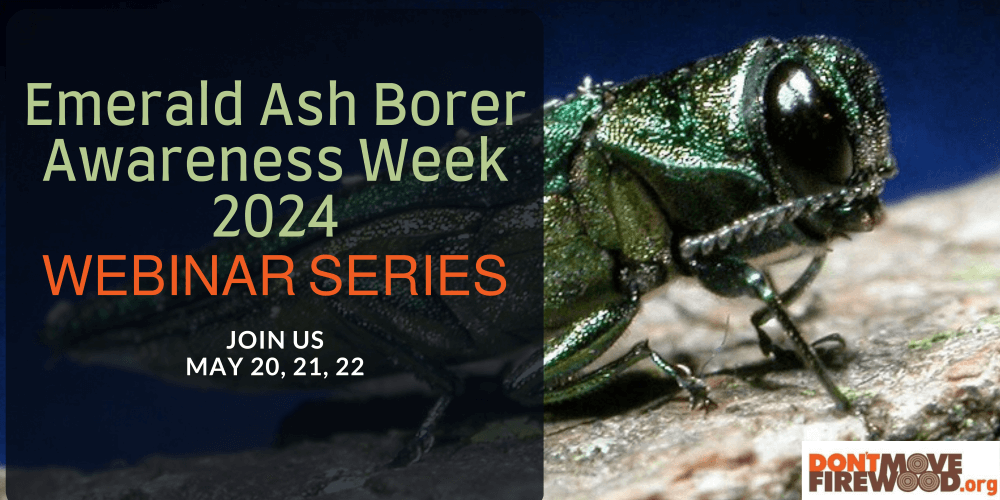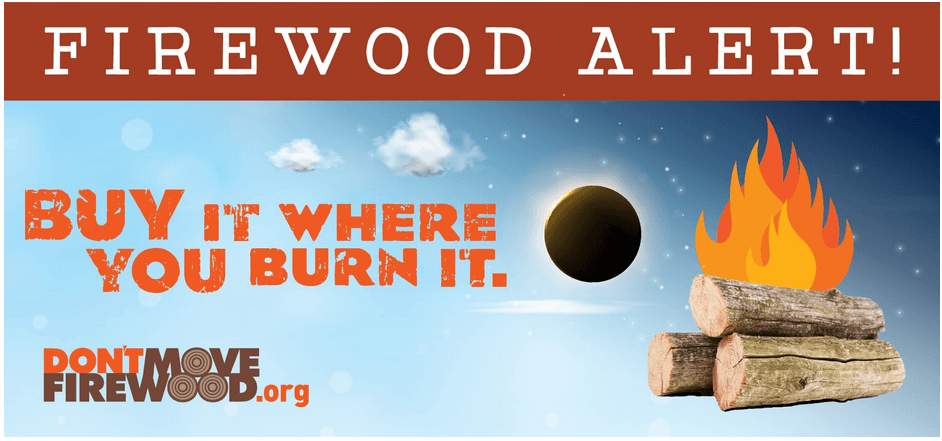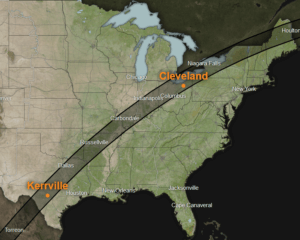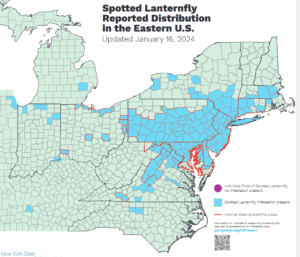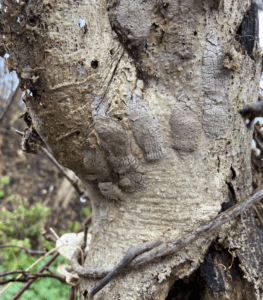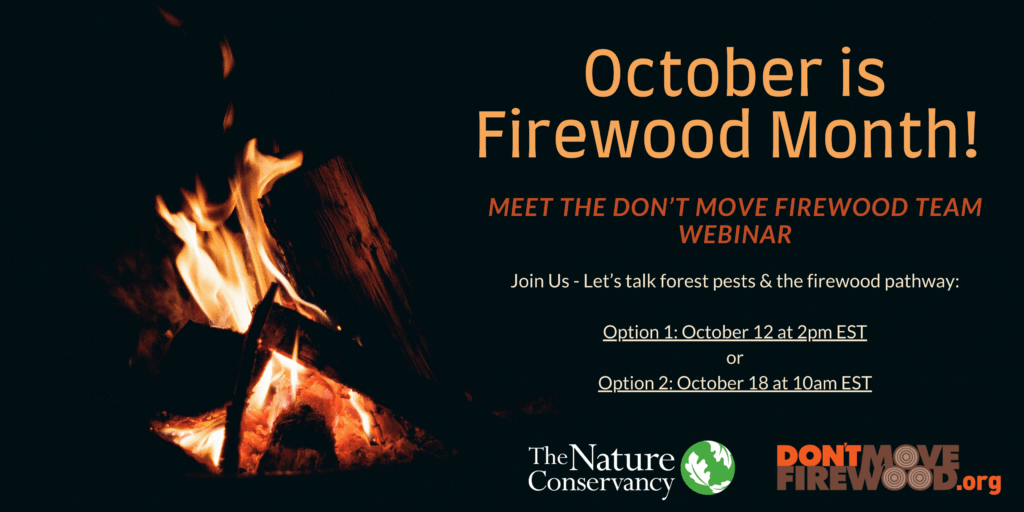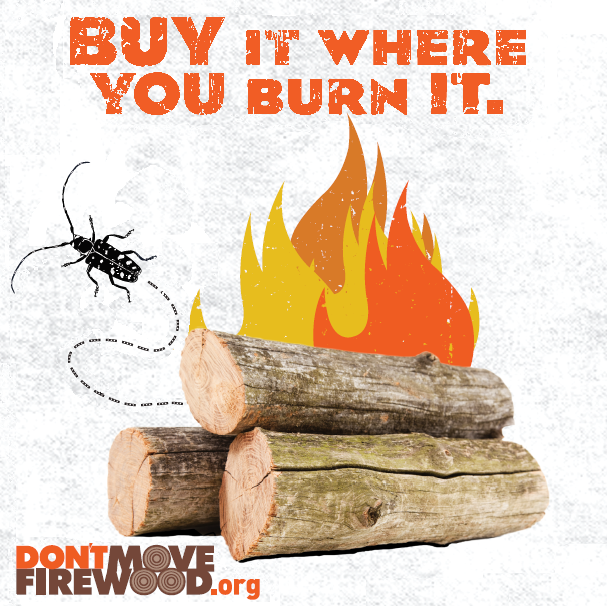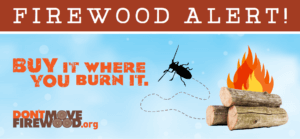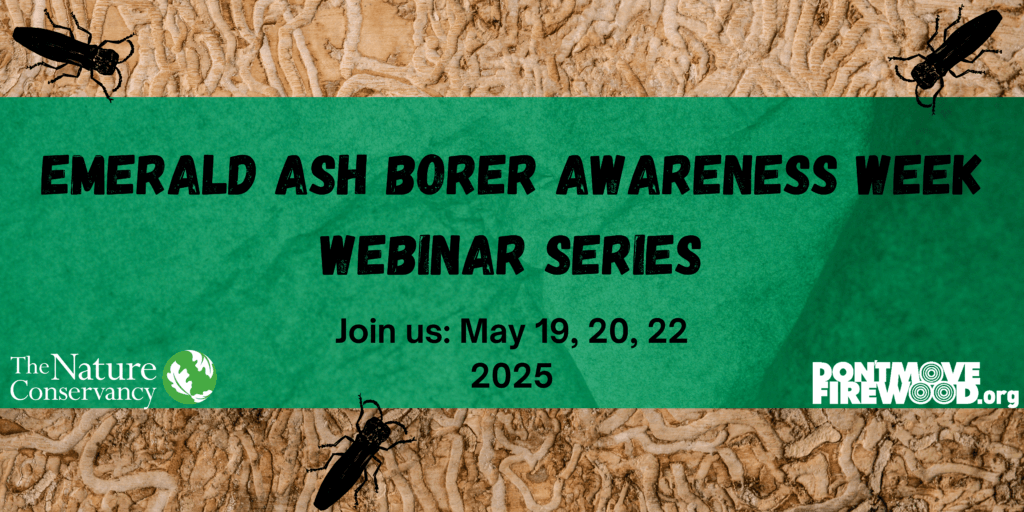
Join us! Emerald Ash Borer Awareness Week is May 18-24th of 2025 and we’re ready with 4 awesome webinars!
In addition to our standard EAB awareness outreach, we at Don’t Move Firewood like to highlight this notorious hitchhiking tree pest by hosting a series of informational webinars each year. Hear from experts on the impacts and management of EAB, ash cultural practices, and social media messaging strategies. Read on to learn more and register!
See details on each webinar and the registration links below:
————————————————————————————————
Monday, May 19th at 2pm EST
Impacts and Management of Emerald Ash Borer
Presentation by: Kathleen Knight, Research Ecologist, USFS Northern Research Station
The emerald ash borer has killed billions of ash trees in cities and forests across the US and Canada. Several ash species in our region inhabit different types of forests and play important ecological roles. The results of 20 years of monitoring the impacts of emerald ash borer on ash populations and forest ecosystems show the ways this invasive pest has changed our forests. Management actions can be used in situation-specific combinations to mitigate the impacts of EAB, preserve ash species, and restore forest function.
- Recorded Version
- PDF of Presentation Slides : Knight EAB Awareness Week
————————————————————————————————
Monday, May 19th at 4pm EST
Don’t Move Firewood Social Media Message Frame Testing: Emotional versus Objective Language
Presentation by: Leigh Greenwood, Forest Pest and Pathogen Program Director, The Nature Conservancy and Gabriel Barrile, Assistant Professor, University of Wyoming
Effective communication on invasive species is crucial for generating awareness and reducing further anthropogenic spread of forest pest and pathogens like EAB. Message frames in invasion biology have evolved as outreach efforts shift away from using potentially problematic metaphors to more ethically conscious language. We at Don’t Move Firewood tested two types of socially responsible message frames on Facebook: one with values-based, emotional and protective language against one with objective, fact-based language to determine if there were any differences in engagement.
- Recorded Version
- PDF of Presentation Slides, which includes citation links
————————————————————————————————
Tuesday, May 20th at 2pm EST
Roots of Resilience: Fighting the EAB Impact on Wetlands
Presentation by: Alexis Grinde, Research Program Manager, Natural Resources Research Institute
Emerald ash borer (EAB) (Agrilus planipennis) is causing widespread mortality of black ash (Fraxinus nigra) trees in the western Great Lakes region, threatening forest ecosystems and biodiversity. To assess the impacts, researchers studied black ash wetlands in northern Minnesota, documenting wildlife species, including birds, mammals, and amphibians. Experimental simulations of EAB-related tree loss revealed significant changes in forest structure and hydrology, influencing wildlife communities. Findings emphasize the need for management strategies that promote alternative tree species to maintain habitat complexity and support biodiversity. Integrating ecological, hydrological, and cultural perspectives will be key to conserving these vital ecosystems.
- Recorded Version (note that recording was disrupted and ended halfway through- sorry!)
- PDF of Presentation Slides (coming soon!)
————————————————————————————————
Thursday, May 22nd at 2pm EST
The Impacts of EAB and the Efforts to Preserve Black Ash
Presentation by: Jessica Raspitha, Land Resources Program Manager, Saint Regis Mohawk Tribe
In response to the Emerald Ash Borer and its impacts on black ash, the Saint Regis Mohawk Tribe’s Environment Division (Jessica Raspitha, Land Resources Program Manager), explains the significance of black ash trees as a cultural resource and the importance of resource availability for the longevity of traditional practices. In incorporating Indigenous Traditional Ecological Knowledge into forest management decisions and objectives, the response to EAB considers both the ecological and cultural value of ash species. Through partnerships and proactive strategies, including monitoring, pesticide injection, biocontrol releases, selective harvesting, seed collection, and restoration, the Tribe aims to preserve black ash for future generations.





